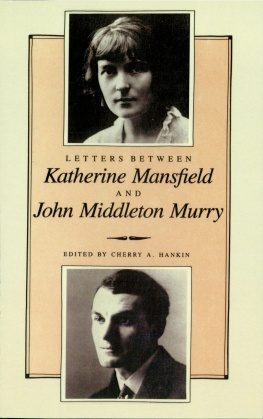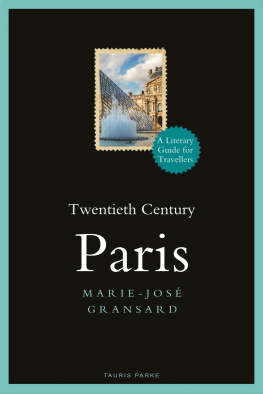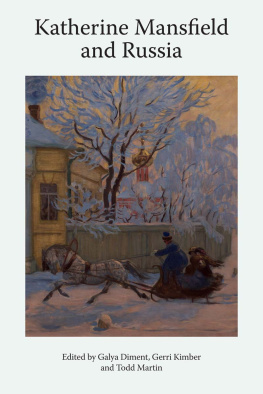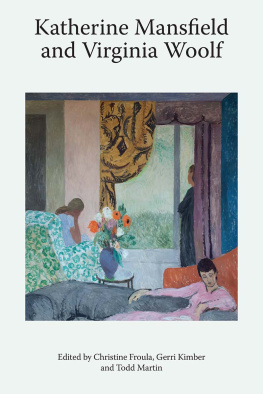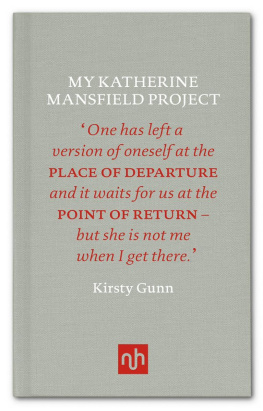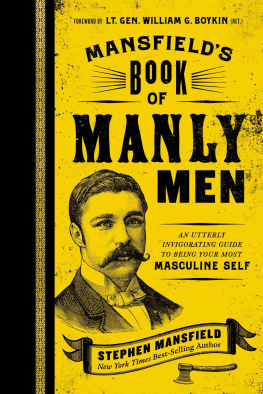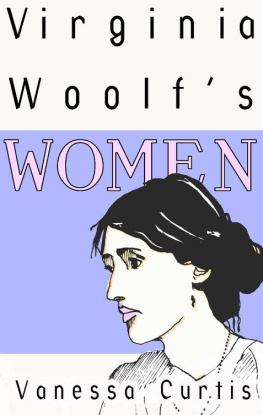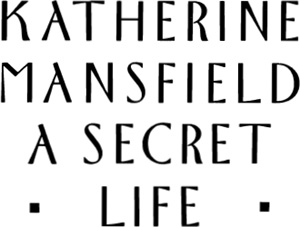PENGUIN BOOKS
KATHERINE MANSFIELD
Claire Tomalin has worked in publishing and journalism all her life. She was literary editor first of the New Statesman and then of the Sunday Times, which she left in 1986. She is the author of The Life and Death of Mary Wollstonecraft, which won the Whitbread First Book Prize for 1974; Shelley and His World (reissued by Penguin in 1992); Katherine Mansfield: A Secret Life (1988), a biography of the modernist writer on whom she also based her 1991 play The Winter Wife; the highly acclaimed The Invisible Woman: The Story of Nelly Ternan and Charles Dickens, which won the 1990 James Tait Black Memorial Prize for Biography, the NCR Book Award in 1991, as well as the Hawthornden Prize; Mrs Jordan's Profession (1995), a study of the Regency actress; Jane Austen: A Life (1998); a collection of her literary journalism entitled Several Strangers: Writing from Three Decades (1999); and Samuel Pepys: The Unequalled Self, which won the Whitbread Biography Award and which went on to win the Whitbread Book of the Year Award for 2002. All her books are published by Penguin.
CLAIRE TOMALIN
PENGUIN BOOKS
PENGUIN BOOKS
Published by the Penguin Group
Penguin Books Ltd, 80 Strand, London WC2R 0RL, England
Penguin Putnam Inc., 375 Hudson Street, New York, New York 10014, USA
Penguin Books Australia Ltd, 250 Camberwell Road, Camberwell, Victoria 3124, Australia
Penguin Books Canada Ltd, 10 Alcorn Avenue, Toronto, Ontario, Canada M4V 3B2
Penguin Books India (P) Ltd, 11 Community Centre, Panchsheel Park, New Delhi 110 017, India
Penguin Books (NZ) Ltd, Cnr Rosedale and Airborne Roads, Albany, Auckland, New Zealand
Penguin Books (South Africa) (Pty) Ltd, 24 Sturdee Avenue, Rosebank 2196, South Africa
Penguin Books Ltd, Registered Offices: 80 Strand, London WC2R 0RL, England
www.penguin.com
First published by Viking 1987
Published in Penguin Books 1988
Copyright Claire Tomalin, 1987
The acknowledgements on p. 4 constitute an extension of this copyright page.
All rights reserved
ISBN: 978-0-14-104234-3
This book is dedicated with love
to my father and stepmother
Emile and Katharine Delavenay,
who lent me a sunny Mediterranean terrace
on which to work
and gave me help, advice and encouragement
over many years
I am a secretive creature to my last bones
Katherine Mansfield to Ida Baker, 22 March 1922
CONTENTS

LIST OF PLATES

The changing face of K.M.
FOREWORD

Research for this book was begun in the mid 1970s and laid aside for various reasons, one of them being the appearance of biographies of Katherine Mansfield by both Jeffrey Meyers (in 1978) and Antony Alpers (in 1980). Inevitably, there was a wide overlap of research. It could hardly have been otherwise. Mr Alpers has devoted many decades to interviewing and researching he published an earlier biography in 1953 and must be the greatest living authority on his subject. Professor Meyers is also prodigiously widely read and vigorous in pursuit of his subject. I read both of their books with admiration, and have profited from both of them.
My own notes, correspondence and draft chapters were put to gather dust and I turned to other work. After some years, however, I began to think that there might be something else to say about Katherine Mansfield after all, some fresh material to be considered, a different perspective from which to view her. Mr Alpers had certainly produced the epic version, with Katherine as playful genius, undervalued and misunderstood on the whole by her contemporaries; he was cautious of J. M. Murry's powers of recall, but inclined to accept his version of those events in which he was involved. Professor Meyers, altogether more cynical in his approach, drew what he called a darker Katherine without, I thought, fully exploring the nature of this darkness.
Both seem to me to have underestimated the importance of certain aspects of her life, in particular the chain of events leading from her first foray into sexual freedom in 1908, and the various long-term results of her association with Floryan Sobieniowski in 1909. I felt that her medical history required more careful study, and the result of this has been a reinterpretation of certain key questions in her life. I have also looked afresh at the blackmail in 1920, and suggested a new approach to that.
Katherine's relations with D. H. Lawrence have been generally underplayed. I have, I hope, shown just how close and important the links between them were, and in particular the use Lawrence made of her experience in some of his most controversial writing. The impress of Katherine's personality on two of the greatest of her contemporaries, Lawrence and Virginia Woolf, produced some very remarkable results.
The fact that I have been able to use the recently published letters of J. M. Murry to Katherine (as well as having access to the unpublished ones) has added a new dimension to the picture of their relationship. I have also had the benefit of many talks with the only daughter of the late Edith Robison (ne Bendall) about her mother's character and feelings for Katherine; and Mrs Robison herself kindly taped a long interview for me before she died.
Neither the Oxford University Press Collected Letters of Katherine Mansfield (vols. I and II) nor the Cambridge University Press Letters of D.H. Lawrence (vols. I, II, III and IV) were available to earlier biographers. Both have enriched and facilitated my work.
One final point is that I am of the same sex as my subject. It may be nonsense to believe that this gives me any advantage over a male biographer. Yet I can't help feeling that any woman who fights her way through life on two fronts taking a traditional female role, but also seeking male privileges may have a special sympathy for such a pioneer as Katherine, and find some of her actions and attitudes less baffling than even the most understanding of men.
Virginia Woolf said that women think back through their mothers. As I worked on Katherine Mansfield's story, I often thought of my mother-in-law, herself a wild colonial girl from Canada who brushed the fringes of Bloomsbury; and of my mother, who came to London from Liverpool in 1917 with a music scholarship. They are both dead now, but they were both gallant and gifted outsiders, and through what they told me of their adventures, ambitions and terrors I felt I approached Katherine Mansfield's experience at certain points. Hers was a painful life, and it has been a painful task to write about it; but I am glad to have done it, and to have had the chance to salute a character in whom recklessness and scrupulousness combined in so extraordinary a fashion.
Claire Tomalin
London, 1987
ACKNOWLEDGEMENTS

Research for this book was begun in the 1970s and interrupted. I should like to express gratitude to the following people who gave me their time, answered my letters, searched their memories or files and in other ways gave me assistance. To some my thanks are, sadly, posthumous.
Next page

